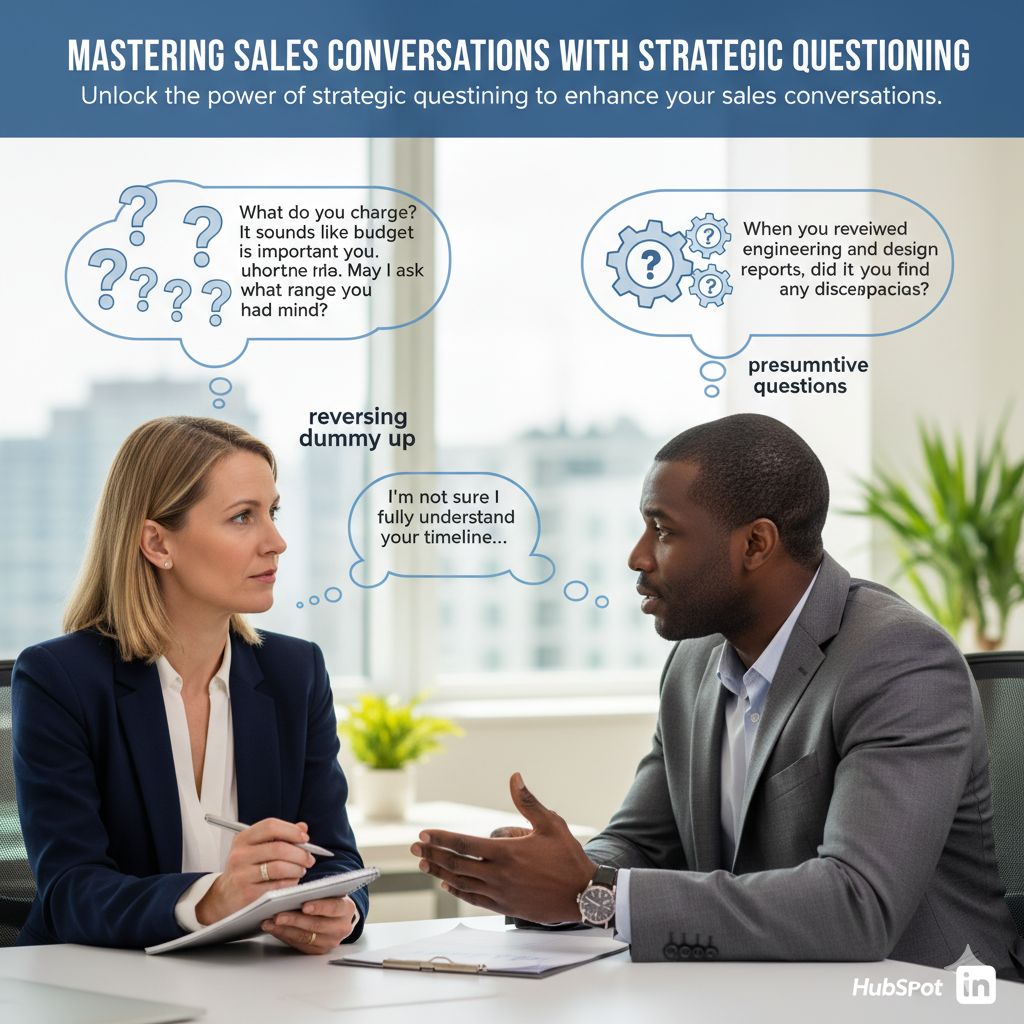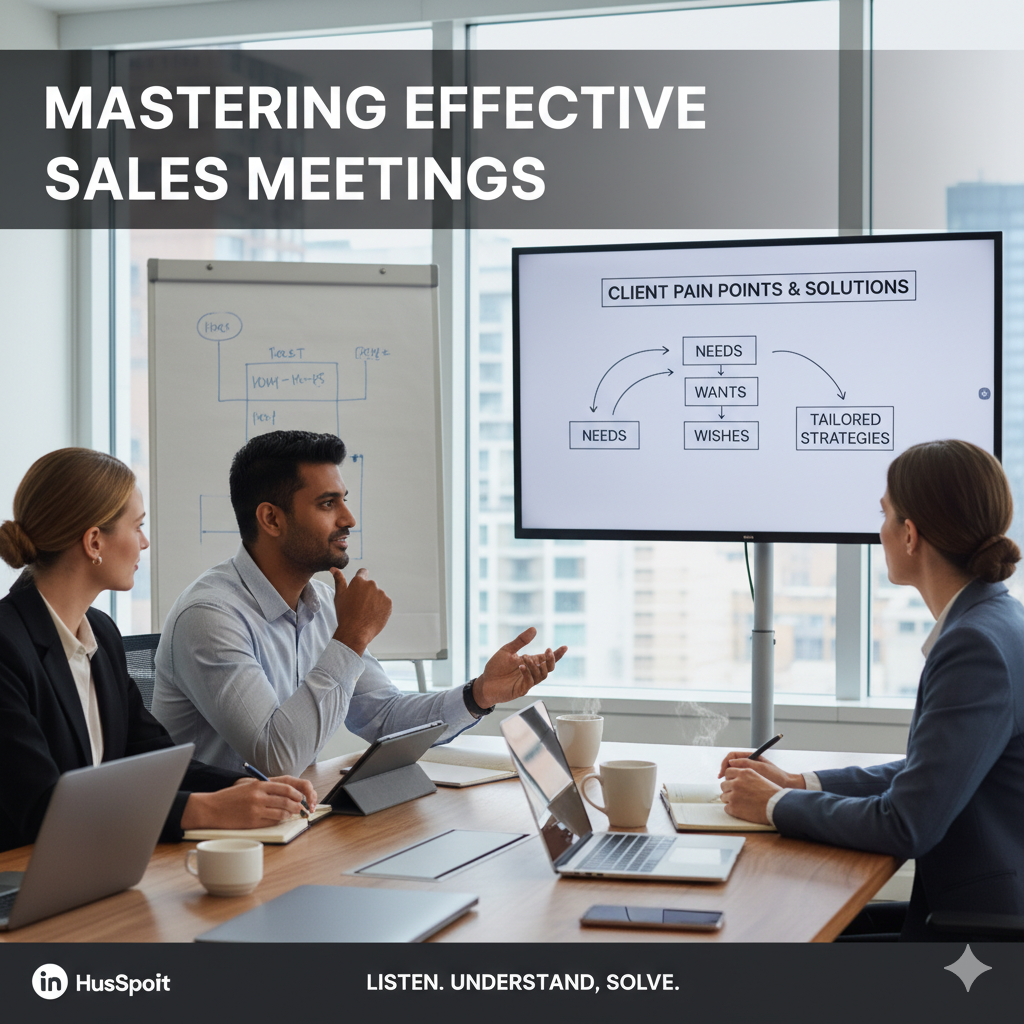Mastering Sales Conversations with Strategic Questioning

Unlock the power of strategic questioning to enhance your sales conversations and build stronger client relationships.
The Power of Reversing: Answering Questions with Questions
Reversing is a technique where you answer a question with another question. This strategy is powerful because it allows you to gain more information and better understand the client's underlying concerns. It also helps in not getting boxed into a corner by providing a more thoughtful response.
For instance, if a client asks, "What do you charge?", a reverse question might be, "It sounds like budget is important to you. May I ask what range you had in mind?" This approach ensures you're addressing their real concern and not just the surface-level question. By answering a question with a question, you keep the dialogue open and gather valuable insights that can guide the conversation more effectively.
Using Dummy Up Questions to Gain Deeper Insights
Dummy up questions are another strategic tool in a sales professional’s arsenal. These questions are framed as if you’re seeking clarification, even if you already know the answer. They start with phrases like, "I'm not sure," "I'm confused," or "Can you help me understand?" The goal is to encourage the client to provide more detailed information, which can be crucial for understanding their needs and pain points.
For example, if a client mentions they need a quick turnaround, you might say, "I'm not sure I fully understand your timeline. Can you help me understand why the quick turnaround is critical for you?" This invites the client to share more about their situation, enabling you to tailor your solution more precisely to their needs.
Maximizing Impact with Presumptive Questions
Presumptive questions give the client credit for having done something they probably haven’t, but should have. This technique can diplomatically nudge them towards acknowledging gaps or oversights in their process. It’s a subtle way of guiding the conversation without coming off as confrontational.
For instance, if you suspect a client hasn’t gathered all the necessary documentation for a project, you might ask, "When you reviewed the engineering and design reports, did you find any discrepancies?" This not only prompts them to think about the reports but also subtly highlights the importance of having them reviewed, all without directly pointing out their oversight.
Tips for Nurturing Questions and Avoiding Pitfalls
Strategic questioning isn’t just about what you ask but also how you ask it. Nurturing your questions with softening statements like, "That’s a great question," or "It sounds like this is important to you," can make your inquiries feel less intrusive and more conversational. This approach builds trust and rapport, making clients more comfortable and open.
Additionally, be mindful of overusing any questioning strategy. If a client repeats the same question, it’s a sign they need a direct answer. Remember, the goal is to understand and address their needs, not to evade questions.
In conclusion, mastering the art of strategic questioning can significantly enhance your sales conversations. By effectively using reversing, dummy up questions, and presumptive questions, you can gain deeper insights, build stronger client relationships, and ultimately drive better sales outcomes. Always remember to nurture your questions and stay attuned to the client’s responses, ensuring a professional, informative, and confident dialogue.


